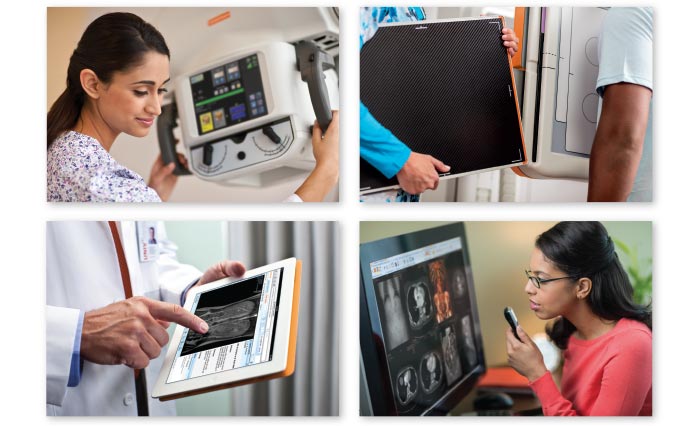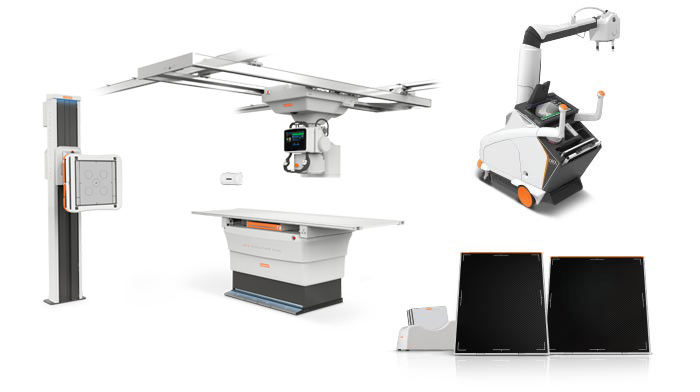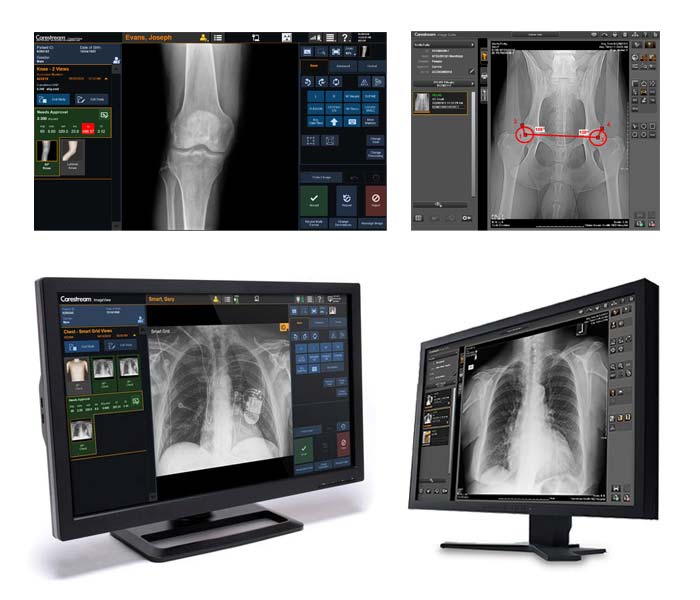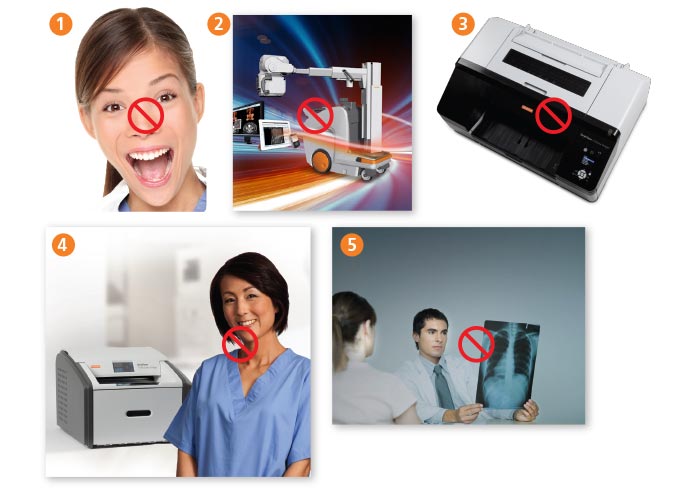Photography
Photography Usage Rights and Limitations
The use of all imagery is governed by strict usage rights. Before incorporating images into your marketing materials, be sure you understand the rules and legal constraints of their use. Failure to adhere to these image-usage property rights can result in significant financial losses and legal exposure for Carestream.
Extreme caution must be used when displaying patient and facility names in screenshots. Be sure to use fictitious names (Jane Sample, Dr. Demo). Facility names should also be clearly fabricated.
To obtain written approval or clarification about specific imagery or talent usage rights, contact us at brand@carestream.com.
CARESTREAM PHOTOGRAPHY HAS STYLE.
Carestream uses four categories of imagery – humanistic, product in-use, hardware, and software photography. Each of these image styles has a specific purpose within our communications.
Every image should be unique and contemporary, delivering a simple and dynamic visual story. We represent our target customers and products with a clean, fresh approach – creating a distinct look that supports the persona of the Carestream Brand.
Humanistic Photography
Our focus on meeting the real, everyday needs of customers is reinforced with photos that portray the human side of healthcare.
Radiologists, technicians, healthcare executives and IT staff are shown in their work environments. They are NEVER photographed looking into the lens, as this denotes the image as posed or staged.
Rather, subjects are photographed as if unaware of the camera – with a natural, spontaneous look and feel. Their demeanor is one of thoughtfulness and confidence.
Humanistic Photography Do’s
- Choose models who exude confidence, leadership and friendliness.
- Use modern-looking, age-appropriate models dressed in the appropriate wardrobe.
- Show models in the appropriate environment that supports the product.
- Shoot with a shallow depth-of-field.
- Crop images tightly to create intrigue.
- Use photos that have dynamic angles.
- Make sure lighting is open and clean.
Humanistic Photography Don’ts
- No direct eye contact with the camera
- No backgrounds in focus
- No harsh, color-saturated backgrounds
- No knock-out images (exceptions may apply)
- No shooting straight-on or centered subjects
- No garish or busy backgrounds

Product-In-Use Photography
This is a blend of humanistic and product photography – with the visual emphasis on the Carestream product. This style of photography allows our customers to see our product “in action,” in a working scenario. It shows the interaction they would experience using our products.
This style of imagery sets us apart from the competition since each image focuses on a specific Carestream product – making it unique and ownable only by Carestream.
Product In-Use Photography Do’s
- Use the most current Carestream products.
- Choose modern-looking and age-appropriate models dressed in the correct wardrobe.
- Capture images in the appropriate environment that supports the product.
- Shoot with a shallow depth-of-field.
- Use photos that have dynamic angles.
- Crop images tightly to create intrigue, with visual emphasis on the product.
- Make sure lighting is open and clean.
Product In-Use Photography Don’ts
- No images of outdated products
- No direct eye contact with the camera
- No models as the primary focus
- No backgrounds in focus
- No harsh, color-saturated backgrounds
- No knock-out images (exceptions may apply)
- No shooting straight-on or centered subjects
- No garish or busy backgrounds

Hardware Photography
Product photography should provide our customers with a clear picture of what they can expect to receive. Products should be presented in an elegant, simple manner and in a way that highlights the most appealing aspects of the product’s physical design. Lighting should be directional but soft – without creating harsh highlights or shadows.
In communication materials such as brochures and sell sheets, hardware should be shown without cropping so the viewer can experiences the entire product. In some instances, detailed photos will be required to show specific features. However, do not crop a product too tightly, as to obscure its identity.
All hardware photography is shot on a white background and either a soft shadow or reflection is added post-production. Color-balance all images to ensure accurate product-color representation.


Software Photography
Screenshots display the richness of our digital healthcare imaging and IT solutions, along with other Carestream software applications.
Because software screenshots are meant to be informative, maintaining their integrity is crucial. Screenshots may not be arbitrarily cropped; they must display the entire application window and user interface.
Screenshots may not be colorized, but they may be skewed as shown. They may be presented with or without a surrounding monitor, but other screen elements, such as desktop background images or taskbars, should never be included.
All software photography is shot on a white background and either a soft shadow or reflection is added post-production. Color-balance all images to ensure accurate screenshot and monitor color representation.
Since software applications generally entail far more than what’s being viewed on an individual screen, the use of a photo illustration to depict or enhance a specific software application is acceptable.

Incorrect Photography Usage
The images on this page are dated, poorly composed, badly lit or otherwise fail to support the brand attributes or brand positioning of Carestream.
 |
Models should NOT have direct eye contact with the camera and should be age-appropriate for the role they are portraying. Models should exude confidence, leadership and friendliness with approachable facial expressions. |
 |
All hardware photography is shot on a white background and either a soft shadow or reflection is added post-production. No harsh, garish, busy or color-saturated backgrounds should be used. |
 |
Product Photography should be presented in an elegant, simple manner and in a way that highlights the most appealing aspects of the product’s physical design. Lighting should be directional but soft – without creating harsh highlights or shadows. |
 |
Models should NOT have direct eye contact with camera. Photos should use dynamic angles and be shot in appropriate environments that support the product. |
 |
Healthcare professionals should be shown in their natural work environments, exuding confidence and success. All images are tightly cropped to create intrigue. Lighting should be open and clean. |
